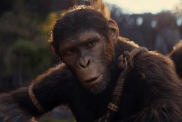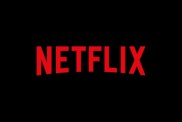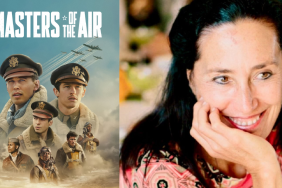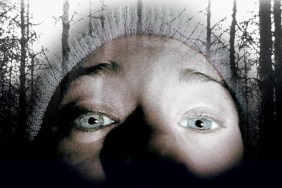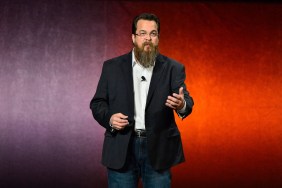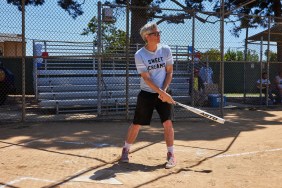
SHOCK talks THE WITCH with director Robert Eggers and star Anya Taylor Joy.
Since debuting at last years Sundance film festival, Robert Eggers New England folk horror tale THE WITCH has been spoken of in hushed tones and justifiably so. Meticulously researched and exquisitely crafted, its easily one of the finest horror films of at least the last decade. Eggers intimidatingly impressive debut walks a fine line between art house respectability and grindhouse intensity, somehow managing to equally satisfy both picky audiences.
Beyond that, the film also has one hell of a hook: taking place within the intense paranoia of the New England witch trials, yet also presenting a world in witch their deepest, darkest fears, folklore, and fantasies were real. Or maybe not. Its really up to the viewer to decide, though not in a frustratingly ambiguous way. More in a manner that challenges and rewards close reading audiences, which is all to rare in horror film these days. Not to mention the fact that the filmmakers high aspirations never get in the way of his visceral aims. THE WITCH is every bit as intense as it is thought provoking.
Set in an isolated cabin by a particularly creepy wood, Eggers story follows a family so pious that they were cast out of a Puritan community. A battered father (Ralph Ineson) and a defeated wife (Katie Dickie) take their children (led by the remarkable Anya Taylor-Joy, also making an impressive big screen debut that should kick off a long career) to a rotted out new home where their infant is almost instantly kidnapped and sacrificed by a particularly horrifying and Goya-esque witch. From there Eggers rarely lets up in torturing his characters and disturbing his audience. The harsh local and claustrophobic paranoia prove to be every bit as punishing on the family as the supernatural element. Its a grueling experience and a rewarding one.
SHOCK was able to speak with writer/director Robert Eggars again (for our solo interview click here) and lead actress Anya Taylor-Joy shortly after their film played at last falls Toronto International Film Festival. The jovial pair were infinitely more pleasant that the searing horror yarn they cooked up together, fondly recalling all of the hardships and twisted influences that defined their collaboration. I suppose theres quite a bit to be happy about when your film is justly dubbed a contemporary horror genre before even being released.

SHOCK: First up, just the concept of setting a film in this era but actually treating the supernatural element as legitimate felt like an idea so ripe that it was surprising no one had really leapt on before. Have you been sitting on this for a while?
Robert Eggers: (Laughs) Well, yes and no. Im from New England and blah, blah, blah. Basically, I was always disappointed that the witches werent real when we learned about the Salem witch trials. That just seems like
Anya Taylor-Joy: The biggest bummer?
RE: Yeah. Whats sort of interesting to meand this sounds like junior high philosophyis that perhaps generations from now people will say, Wow, in the 21st century, people thought of science and numbers as god and what a stupid way of thinking they had. But thats real for us and thats the end of it. So even though the ministers in Salem said, Wow, we made a great mistake there really were no witches here. Just the devil, maybe elsewhere in New England there were witches that did exist. In a world where people believe in something, then it does exist. So, in researching the early modern period, I realized that the fairy tale world and the real world were strongly connected. The same tropes that women were on trial for existed in the folk tales, so it was exciting to make a movie that played with peoples expectations. People ask a lot, How did you balance the reality with the fantasy? Well, that was their reality. So it wasnt so much about a balance but about giving the magical stuff a texture that felt grounded. Making it seem real looking and feeling.
ATJ: Its not a fantastical world for the characters. Its their real world.
SHOCK: So was the research something that youd just been doing privately before you thought of making the film or was it always connected?
RE: Well, its all stuff that Ive been interested in. I couldnt write a good one, but I could definitely write a book about how to farm in the 17th century, you know what I mean?
ATJ: He was the go-to point on set. If there was any question about period, wed just go straight to him.
SHOCK: So you didnt get a big folder of research material or anything?
ATJ: No, Rob definitely sent us stuff. But if there was ever a basic question like about where something should be or how we should behave, wed all just say, Rob knows.
SHOCK: When you got the script, did you have any idea of what to expect from the language or the way the subject matter was presented? Id imagine when getting a script called THE WITCH, you might expect something a little hokey.
ATJ: Not really. To be honest, Im so new to this that I didnt really have any preconceptions of what to expect. People talk a lot about the language and I dont know where it comes from in me but its never been a problem. The first time I read the script, I completely understood it. It never seemed weird that this was the language or that it was particularly difficult to me. I will say that I read it very late at night and I didnt sleep that night because I was so freaked out by the thing. I was like, What the hell? What is this? It really took a hold of me very quickly.
SHOCK: Did writing the dialogue in this style break your brain at a certain point or did it come very naturally?
RE: It took a lot of work. I have a Shakespeare background, so it wasnt intimidating and it was fun.
SHOCK: I was very impressed by the design and look of the witches. I was wondering what you drew influence for that? The only similar film I could point to would be Roman Polanskis version of Macbeth.
RE: Certainly we took from primary sources quite a bit. But also anachronistically, we looked at Goya and Salvator Rosa. Then also guys like Hans Durr and Hans Baldung Grien. I wish his name was pronounced Grime, but its not. That would be more appropriate. But yeah, guys like that were definitely very influential.

SHOCK: In terms of the horror element, I really enjoyed how you would mix between the supernatural and the psychological and the interpersonal. It almost feels like an assault of discomfort in the best way. Was it tricky to balance that? Did it put you in a rough head-space to be writing a film that was so grim in every possible way?
ATJ: Yeah, youre so grim.
RE: (Laughs) It wasnt something that I was consciously trying to find a balance for, but Im certainly glad that you found they were all there. Its just not something that thought too openly about.
SHOCK: Fair enough. I enjoyed how ambiguously you trotted the line between reality and the supernatural and the hallucinatory. Did you draw a fine line for yourself as wrier between those elements? Or is the film even ambiguous for you?
RE: Actually, even for myself there are multiple readings. Only a couple of nerds have been wise enough to think that the fungus growing on the corn is ergot. If you even want to go into that world, Im happy for people to read it that way.
SHOCK: How was the process of filming on everyone? There arent many quiet scenes that dont have some sort intensity to them. Did that get exhausting or eat away at you during the production?
RE: Go for it.
ATJ: Thanks. Well, its a terrifying story, but it so much fun on set. There was a lot of love between all of us. We really bonded as a little family group and pulled through. If you were to take it from a technical point of view, yes the shoot was very difficult: weather, animals, kids with limited working hours. All of that sort of stuff. But I had the best time. Everyone was so lovely and enjoyed each other. But more than that, I think everyone shared the desire to make this film what it needed to be. We werent going to let it down. It was such a good script that we were going to rise up and meet it. So that really brought every together. Good?
RE: Yeah.
(Both Laugh)
RE: But you know, the crew was super frustrated. We kept having to rearrange the schedule constantly. And there were problems like not having enough toilets. It was tough. But the relationships that we had were very powerful and it was great to be able to cast actors that werent just right for the roles, but great to work with.
SHOCK: Since the location was practically a character, how difficult was it to find the right spot?
RE: Very hard to find. We shot it in Northern Ontario and so many of the forests out there are these newly planted tiny little red pins in neat rows. So we just kept have to searching further and further away to find white pines and hemlocks that were the right size to create a primeval New England feeling.
SHOCK: I think the second best performance in the film, after Anya of course, might be from Charlie the goat. How tricky was that to have such an important performance come from livestock?
RE: It was horrible. It was completely terrible and the worst thing ever.
ATJ: Its because he was so chilled out. He just wanted to sleep in the sun.
RE: There were mornings that I was crying while drinking my coffee because I was thinking, We are never going to be able to get this goat to do what we need. So Im very relieved and pleased with how it turned out.
SHOCK: Finally, is there anything whatsoever that you can tell me about the NOSFERATU project that youre working on?
RE: Yeah, its very far away. I have at least one other film that Im hoping to do before that.
SHOCK: Whats that one?
RE: Its a medieval epic fantasy about knights, angels, demons and chivalry.
SHOCK: That sounds about right.
THE WITCH opens wide tomorrow.

